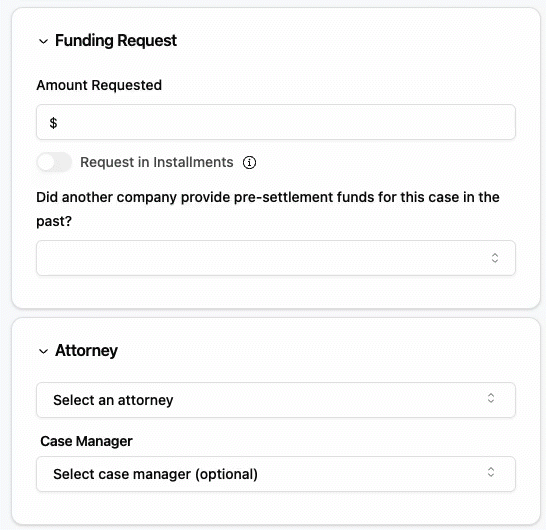Is Your Law Firm Ready for the Future of Legal Funding?
.png)
The world of legal funding is evolving rapidly, and law firms must stay ahead of the curve to remain competitive and ensure they offer clients the best solutions. With the rise of technology-driven funding solutions, non-recourse funding, and increased regulatory scrutiny, it’s essential for law firms to adapt to these changes. So, is your law firm prepared to face the future of legal funding?
In this article, we’ll explore what the future of legal funding looks like and how your firm can position itself for success in this ever-changing landscape.
1. The Shift Towards Digital and Technology-Driven Funding Solutions
What’s changing?
As technology continues to transform the legal industry, digital platforms and automation are becoming increasingly prevalent in legal funding. AI-driven tools, data analysis, and cloud-based solutions allow for quicker decision-making and more efficient funding processes.
How to adapt:
To stay competitive, law firms should begin exploring digital funding solutions that allow for faster approval processes, better risk assessments, and more accurate case predictions. Golden Pear’s Law Firm Portal, for example, offers law firms instant access to funding and enables easy management of funding requests through a streamlined, user-friendly platform.
2. Non-Recourse Funding: A Growing Trend
What’s changing?
The non-recourse funding model, where law firms or clients only repay the funder if the case is successful, is gaining popularity. This model reduces the financial risk for firms, allowing them to take on more cases without worrying about upfront costs.
How to adapt:
To prepare for this shift, law firms should familiarize themselves with non-recourse funding options. Understanding the benefits and terms of these agreements can help firms make better decisions when choosing funding partners, ensuring they don’t get caught in agreements that don’t align with their financial goals.
3. Increasing Regulatory Oversight of Legal Funding
What’s changing?
As litigation funding continues to grow, regulatory oversight is increasing. Governments and regulatory bodies are placing more emphasis on transparency, disclosure, and consumer protection within the legal funding industry. This includes new laws requiring funders to disclose their financial arrangements and details of funding agreements.
How to adapt:
Law firms should stay up-to-date on the legal regulations around third-party funding in their jurisdiction. Being proactive in understanding new regulations and partnering with a funding provider who is transparent and compliant will ensure your firm remains ahead of the curve.
4. The Role of Litigation Funding in Expanding Access to Justice
What’s changing?
One of the most significant benefits of legal funding is its ability to level the playing field for clients who cannot afford to pay for litigation upfront. As more firms adopt litigation funding, access to justice improves, particularly for low-income clients or those facing high-stakes litigation.
How to adapt:
Incorporating litigation funding into your firm’s practice can increase your client base by enabling you to serve clients who might otherwise have been unable to afford legal fees. By partnering with a funder that aligns with your values, you can enhance your firm’s reputation for providing access to justice while also growing your client roster.
5. The Impact of Globalization on Legal Funding
What’s changing?
As legal cases become more international and cross-border in nature, there is a growing trend of global litigation funding. This allows law firms to access capital for international cases, and funders are increasingly expanding their reach to provide financing for cases worldwide.
How to adapt:
If your firm handles international cases, it’s important to explore global funding options and understand how cross-border litigation is financed. Being open to global funding providers will position your firm to take on more complex and higher-value cases.
The future of legal funding is exciting, full of new opportunities and innovations. For law firms to stay ahead, they must be proactive in embracing technology, adapting to non-recourse funding models, understanding new regulations, and expanding access to justice for their clients.
By taking the time to understand and integrate these changes, your law firm can remain competitive, efficient, and client-focused. It’s time to get ready for the future of legal funding—are you prepared?

.png)
